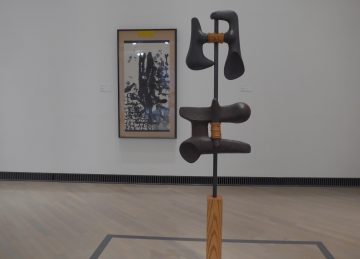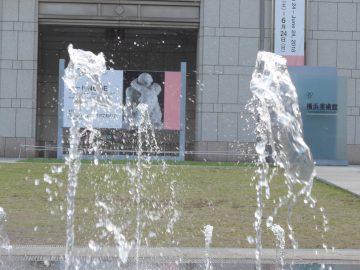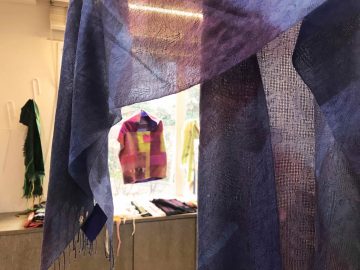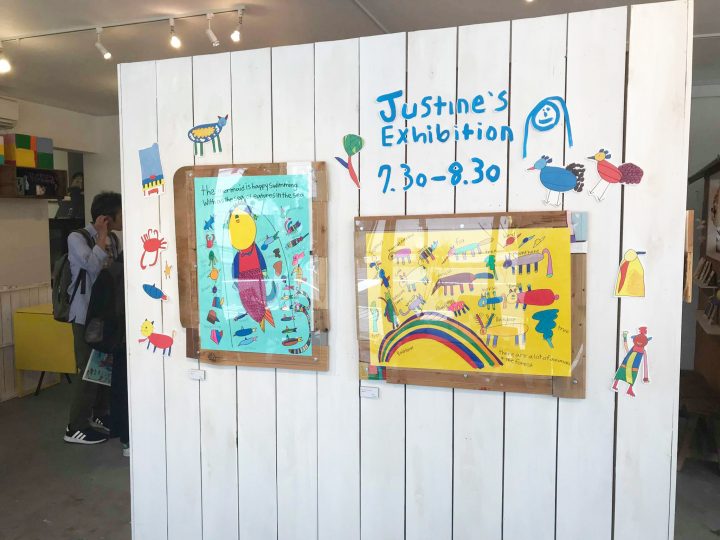Interview with Ichiro Sudo, Director of the Sudo Museum of Art | It all started with a painting
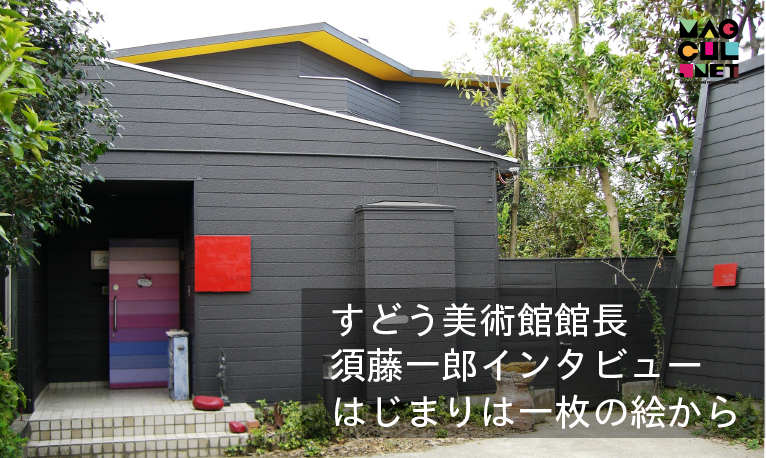
Interview & Text: Masamasa Nishino
It all started with a single painting
–I heard that you were an insurance company employee when you first purchased a piece of art, which led you to open the Sudo Museum. Were you not interested in art at first?
Sudo : That's right. I'd never bought art before, but when I saw a work by an artist called Suga Sokichi at a museum, I initially thought it was a strange painting, but the longer I looked at it the more I was interested in it. Then, gradually, something about it started to speak to me, and both my wife and I grew to like it, so we asked the museum director to sell it to us, and that was our first collection.
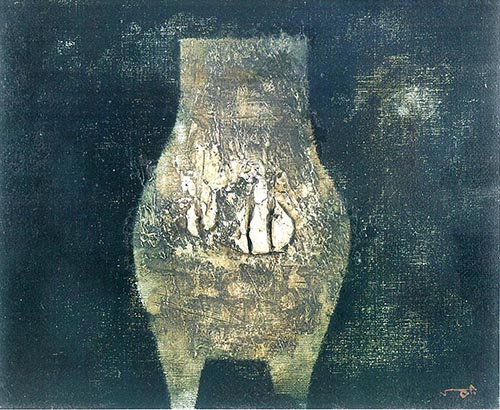
This is a work by Suga Sokichi that inspired me to start collecting works.
–How did you end up owning so many of his works?
Sudo : After seeing that one piece, I wanted to get his other works, so when I found out that his works were on display at art museums in Himeji and Kobe, I went to both. I also found out that his works were available at galleries in Tokyo and Osaka, so that was my first time stepping into a gallery.
–For people who have never been to an art gallery, do they have the impression that it is intimidating to enter?
Sudo : That's right. As a gallery beginner, I had the impression that I couldn't leave unless I bought something, so I was very nervous (laughs). But that wasn't the case, and it was my chance to visit various galleries, and as I looked at other artists' works, I began to want their works as well... My wife and I were in the same boat, so we kept buying.
-And so your collection of works continued to grow. Listening to your story so far, I am reminded of the collector couple Herb and Dorothy*.
*About Herb & Dorothy
Herb, a postal worker, and Dorothy, a librarian, are a married couple who have built one of the world's leading art collections. Although they didn't have a high income, they continued to purchase works of art little by little, and the number of pieces exceeded 5,000. In recent years, the collection has been donated in parts to art museums in all 50 states of the United States.
Sudo : I get that a lot (laughs). But I didn't consciously collect them as a collector, so I feel like it just happened that way. Maybe I can't call myself a collector, but I feel like if I don't buy a work that catches my eye, the blue bird will fly away... But I think you should buy a work not based on price or name, but on how you feel it and enjoy it.
–Earlier we talked about what prompted you to purchase works of art, but eventually the works came together and you were able to open the Sudo Museum.
Sudo : Yes. When I had collected a lot of paintings, I thought about "what is the role of paintings?" and the answers I came up with were "to have many people look at them" and "to convey the emotion that paintings convey to people." So I created an exhibition space in my home in Machida, where I lived at the time, and opened it up to the public. Since the purpose was to have people look at the paintings, I named it the "Sudo Museum" and opened it up on Thursdays, Fridays, Saturdays, and Sundays. My wife was there on weekdays, and I was there on weekends, too, and we did various activities there for eight years. At that time, I was still working for a company, so I could have ended it when I retired, but I was featured on NHK's Sunday Museum, and I had made many connections as I continued my activities, so after Machida, I opened a gallery in Ginza, where it remained for 10 years, and then moved to this location.
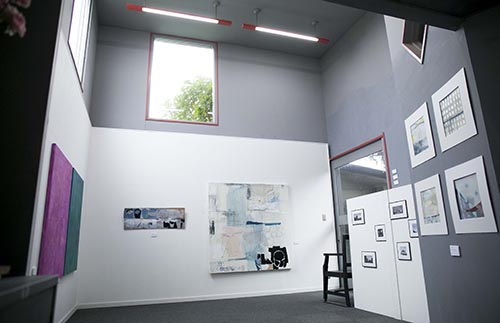
The Sudo Museum is housed in a renovated building that was previously used as an artist's studio.
As it was originally a studio, comfortable natural light poured into the space.
What only the Sudo Museum can do
–It started with one painting, and I can now see how your activities have grown. By the way, the works on display at the venue where we are currently recording are created by artists who were invited to the artist-in-residence program. Why did you choose Odawara as your residency?
Sudo : We invite artists every two years, and this is the third time. Even before we moved to Odawara, we were asked by residencies in Spain and Slovenia to introduce Japanese artists, but I had always felt that we should not only introduce artists but also invite them to Japan. However, it was difficult to do this in Ginza due to the location, but I thought it might be possible in this scenic area of Odawara, so I took a proposal to the local government and asked them, "Would you like to do something like this?" However, it was impossible, so I decided to start it on my own. Artist-in-residence programs have many possibilities, not only for promoting art and nurturing and supporting artists, but also for artists to interact with local residents through their stay and production. This time, artists and local residents were able to interact through various activities such as concerts, artist workshops, symposiums, and public production of works.

A workshop for interacting with local residents held during the artist-in-residence program
–Do you select the artists, Mr. Sudo?
Sudo : Yes. We openly recruited Japanese artists, and I interviewed and selected all of them. However, I couldn't interview the foreign artists, so I asked various people I had connections with to recommend them. This time in particular, I thought it would be good to have artists from various countries, so I decided to invite artists from the United States, Germany, Spain, Switzerland, and Sweden.
–There are so many artists from all over the world participating. When artists stay and create in Odawara, are there any particular points of view or trends that they pay attention to when they come to Odawara?
Sudo : I don't know if it can be called a trend, but first, we have the participating artists take their time to see what kind of place Odawara is. There is a castle, a famous soy sauce shop, and many other things to see. We also had them try Zen meditation at Daiyuzan Saijoji Temple (laughs). So, there are certainly some artists who are inspired by such places. The work by Junko Okamoto exhibited there was inspired by the wall of a soy sauce shop and created as a paper collage. Also, Victor Alba's (Spain) landscape painting of Mt. Fuji is a work that I think you could say was created by feeling it from this place. However, there are also artists who have their own unique themes, such as Kate Ali's (USA) work, which expresses a graph of the unemployment rate as a picture. I have the impression that many overseas artists create works based on various themes such as political issues and environmental issues. Also, as an aside, I think it would be cramped to just create, so I also set free time for each artist.

Photo left: Junko Okamoto (Japan) / Photo right: Victor Alba (Spain) | Both artists have depicted their experiences in Odawara in two dimensions.
–That is a valuable experience (laughs). Certainly, if you only create every day, there would be no point in coming to Odawara, and I think you need some time to feel free and relaxed.
Sudo : Yes. The production is important, but by letting people experience the good things about Odawara, I think the good things about this area will be conveyed, which will lead to tourism and the economy. We've been talking to the city about the need to think about this from a broader perspective.
Photo by Kate Ali (USA) | The white line is a reference to a graph of the unemployment rate.
-Then, my last question is that eight years ago, a museum suddenly appeared in a residential area, and I think that many local people were not interested in art. However, for eight years, you have been carrying out various activities, including this artist-in-residence program, but have you seen any changes in the local reaction through your activities? Also, I would like to know your future prospects.
Sudo : I entered the art world through my experience as a salaryman, but I have a strong desire to convey to people that art is indispensable to the human spirit. It is not a complete art gallery, nor is it a large art museum. But I think that we have done things that only the Sudo Museum can do. In addition to the residency, after the earthquake, we held exhibitions, concerts, workshops, etc. in the disaster-stricken areas of Iwate Prefecture, and we have also taken our collection to other regions and held art exhibitions. I think that art is not generally familiar to the general public, but since we have always exhibited high-quality works that should be seen by many people, people in the surrounding area have become quite interested in it. In particular, many people have cooperated and visited the artist-in-residence program. I feel that the meaning of the activities we have been doing so far has been conveyed to many people. As for our future prospects, I think we will continue. As for this residency program and the support project for East Japan, I don't know how long we can continue. I hope that someone will come forward to continue these activities in some form.
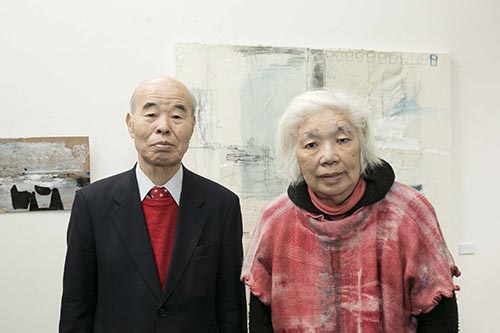
Photo: Museum director Ichiro Sudo and his wife Noriko Sudo
A New Year's Selection Exhibition will be held from Friday, January 8th to Sunday, January 24th.
[Dates] January 8th (Friday) to January 24th (Sunday) Closed on Mondays
[Opening hours] 11:00-18:00 (until 17:00 on the last day)
http://www.sudoh-art.com/jp/home.html
